Hyundai Kona Hybrid review and buyer’s guide
Small SUV buyers like yourself might not quite be ready to go full-EV with something like Kona Electric, and that’s okay. In the meantime the Kona Hybrid does fuel economy like an extreme sport, so here’s why you should think about one in 2024…
The Hyundai Kona hybrid is back with a bright colour palette and compelling value to rival the Toyota small SUV hybrid. This means there’s more under the bonnet than just looks and sharp styling.
This is the most fuel efficient Kona ever, offering an official average consumption of just 3.9L/100km. This looks really good against its rivals, for which there are only a handful of hybrid options at the moment.
This review will focus primarily on the Kona Hybrid, so if you want more on the wider range and greater detail on Hyundai Kona, click here >>
Other small SUVs you should be considering include the strong-value Kia Seltos >> the camping-conscious all-wheel drive Subaru Crosstrek >> the Mitsubishi ASX if on a tight budget, or there’s the Mazda CX-3 if you want a gorgeous interior and are happy with a tiny boot.
Download the Kona Hybrid specifications sheet here >>
One of the great things about the new powertrain is that it’s available across all trim levels. You don’t need to spend up big to enjoy hybrid economy.
Prices start from $36,000 for the base model and top out at $46,500 for the N Line Premium hybrid. Along this spectrum you’ll find the hybrid N Line (from $40,000) and hybrid Premium (from $43,500). All excluding on-road costs.
In base form, the hybrid option is $4000 more than the equivalent non-hybrid model. Considering the standard 2.0L petrol has an official average consumption of 6.6L/100km, $4000 could pay for 30,000km of driving, or about two years of use, based on today’s average petrol price of $1.96/litre for 91 RON.
The point here being that unlike in an all-electric vehicle which usually commands a much higher price, in the Kona Hybrid you can absolutely entertain the rationale of making back the upfront price premium in fuel savings.
And the best part is you also get a more practical and more appropriate vehicle for the majority of Australian driving: metropolitan inner-city commuter traffic, where stop-start driving is frequent. This is where hybrids do their best work, using the battery to get you going and the petrol engine to keep you going once you’re at speed.
Plus, there’s now more room for the weekly groceries - 407 litres to be exact. Cargo volume is roughly 30 per cent greater in Kona Hybrid than a Toyota C-HR, a Subaru Crosstrek, Mazda CX-30 and it’s negligible with Corolla Cross hybrid which is more expensive, by the way. So that’s nice.
The wheelbase on new Kona is 60mm longer than the previous Kona, reaching 2.66 metres in total. And that’s just 40mm shorter than a current model Mazda CX-5 which absolutely does not leave you wanting any more legroom. To say new Kona is as comfy as a bigger midsize SUV for space is an understatement.
The headroom is up by 1cm, the second row seats benefit from a completely flat floor thanks to the lack of transmission tunnel, and in the event you need to carry longer or bulkier items without row 2 in use, the back seats fold down just 10 degrees shy of completely flat.
In loading those bulky items like a new telly or a pram or whatever, the aperture of the tailgate is 38mm wider, and the lip edge liftover height us reduced to 676mm off the ground, which is good news for picking up heavier items and avoiding that telltale rear bumper paint scuffing.
Inside Kona, it’s still as functionally proficient as ever, thanks in part to Hyundai’s common sense approach to letting buttons remain where other carmakers are doing their best to ditch these kinds of haptic feedback systems. The rocker switches to adjust temperature even feel nicely premium to use, and quite robust. (Click to enlarge below)
Is it well equipped even if you go for the base model?
Yes. Hyundai has done well with the latest model to apply a high baseline in terms of features. For example, all models come with a 12.3-inch digital touch-screen that sprawls across the dash. It wasn’t long ago when this sort of thing was reserved for the top models only.
However, the base models don’t get split-screen functionality, as seen in the Premium and N Line Premium. Embedded satellite navigation is also held for the top two. But you get digital radio, Android Auto and Apple CarPlay, and Hyundai’s new Bluelink smartphone connectivity suite.
Bluelink provides communication between you and your car via a smartphone app, enabling remote, live vehicle status checks including fuel range, as well as automatic emergency calling in the event of an accident. If this sounds complex, don’t worry. You don’t have to use the app if you don’t want to.
Other standard inclusions that help boost value include wireless phone charging, adaptive cruise control with stop-and-go functionality, three drive modes (Eco, Normal, Sport), rear USB ports, dual-zone climate control, and auto LED headlights. Safety tech is also in abundance, however, some of the automated systems can be more annoying than helpful.
DRIVING
Nothing out of the ordinary. You don’t need to plug this in and recharge it and you don’t ever have to worry about the range – aside from the normal range of the 38L fuel tank, which is, theoretically, 974km against 712km in the 2.0L model. Simply get in and drive it exactly as you would a regular Kona.
As part of the all-new model’s introduction, the 2024 Kona features a shift-by-wire transmission. This might sound complicated but it basically means the gear shifter itself is not physically connected to the transmission. Instead, it’s all done electronically. And that allows designers to move the shifter up onto the steering column to free up storage space around the centre console.
Although you will need to adapt to the new shifter’s location and operation, with its twist-type selection mechanism, this isn’t exclusive to the hybrid; most new Kona models feature this setup as well except the base model. It literally takes five seconds to observe how it works and then you’re all set. It’ll become second-nature in no time.
The reason this new Kona model is so distinctly improved is because in the hybrid and full-electric versions yet to come, they are engineered from the beginning on a platform designed to deal with those unique powertrains.
There’s a phenomenon called modal separation which occurs as a result of changing the mass-centre of the vehicle when you swap out the combustion powertrain for the heavy, low-down mass of the battery and more localised mass of the AC electric motors. These components are mounted in different places, but all the suspension geometry remains the same with the same pick-up points.
What this does is change how the vehicle behaves dynamically. So it bounces and rolls more profoundly because the suspension is not optimised for the change in how the powertrain mass is arranged. Combustion powertrains are more spread-out down the centre, over the length of the vehicle front-to-rear. Whereas the batteries and motors are basically all grouped in the front and/or rear in the hybrid, or ultra low-down and widely spread out in the Kona Electric, making for a very different set of engineering challenges.
This doesn’t happen in new Kona because the whole platform has been re-designed as an EV first, but to adapt for the combustion powertrain. So the 1.6 hybrid + DCT, the 2.0 CVT and the 1.6 8spd auto are all adapted to suit the EV Kona’s platform, not the other way around. This is a much better outcome for all powertrain types.
Australian tuning
Hyundai Australia conducts its own testing on vehicles sold here and in some cases applies its own unique tune for the suspension and steering, if it can and if the overseas setting is not suitable for our conditions. Most of the time though, the overseas tune only needs a minor tweak. But the main thing is the local mob does local testing to make sure. Not many other brands do this.
For the new Kona the local team didn’t make any changes from the supplied package, however, Hyundai Australia product development manager, Tim Rodgers, said:
“We evaluated pre-production test vehicles very early on and we were extremely pleased with the settings R&D had developed for new Kona. The quality of the global chassis settings is incredibly high and Kona performed exceptionally across the full range of Australian road conditions.”
Rodgers also said the new model provides a more consistent feel across the range, despite some variants featuring torsion-beam rear suspension and others featuring multi-link, with and without all-wheel drive. He said:
“The platform has been engineered in such a way that there is a more consistent feel across the range. Overall, we believe new-generation Kona feels significantly more refined than the previous generation.”
Out on the road it clearly feels like a more refined proposition than before. The platform’s ability to absorb bumps is improved over the predecessor, and there are fewer vibrations sent through the body. It seems to resolve itself much quicker than before, which is ideal on Australia’s old and worn country roads.
The hybrid powertrain develops 104kW of power, making it the least powerful powertrain on offer, but it also develops 265Nm of torque. Torque is the stuff that pushes you along and gets you up steep hills, and helps carry heavy loads. So, arguably, that latter figure is more important anyway.
On the electrical side you'll find a 1.32kWh battery that feeds a 32kW/170Nm electric motor assist system. This isn't powerful enough to supply any sort of meaningful fully electric driving range, but it supports the petrol engine and reduces its load, improving economy.
It doesn’t feel sluggish or slow to drive, and Hyundai decided to go with a dual-clutch auto transmission instead of a CVT with the hybrid. This is an unusual choice but it seems to work just fine. The electric motor with its instant low-down torque helps pick up some of the initial slack from the dual-clutch gearbox. With actual gears to play with it can be quite engaging and enjoyable, too.
The different driving modes don’t really change the characteristics all that much, except in Eco mode it loosens off the throttle sensitivity by quite a bit. In this mode it is possible to get close to the official average consumption figure. Even under normal driving demands you could expect to achieve around 5.5-6.0L/100km.
I'll help you save thousands on a new Hyundai Kona Hybrid here
Just fill in this form. No more car dealership rip-offs. Greater transparency. Less stress.
INTERIOR
The new Kona jumps to Hyundai-Kia’s K3 platform. This is the company’s next-gen small vehicle platform and is found under the i30 Sedan. With this, Hyundai designers have created a much bigger cabin. Especially in the back.
Rear-seat legroom has increased by an impressive 77mm and shoulder room is up by 17mm. Headroom is also up by 11mm in the back. In the front it is similar to the previous model, however, the new dash and console design makes it feel larger and more open than before.
Boot space doesn’t suffer at all because of the battery and hybrid technology. All models, including the all-wheel drive N Line with the 1.6L turbo engine, offer 407L. That’s up 33L from the predecessor. If you fold down the rear seats, which lie completely flat, you’ll expose 1241L. That’s up 85L from the old model.
So, essentially, there is no compromise in terms of cabin space with the hybrid. The cabin and boot are exactly the same. A space-saver spare wheel is located under the boot floor in all models, including the upcoming Kona Electric.
Should you buy the hybrid or stick with the petrol options?
The hybrid has the potential to offset that initial $4000 premium above the 2.0L petrol model within a couple of years, depending on how much driving you do and of course monitoring fuel prices.
If you’re worried about it offering lower performance, don’t be. It drives just fine and accelerates quicker than the base 2.0L option. And with a decent peak torque output, it carries a full car-load much easier as well.
Some of the safety systems can be very frustrating but this is not an issue exclusive to the Kona or Hyundai; these are fast-becoming default packages for all new cars and not many of them provide seamless operation.
If you’re in the market for a smart, very economical little SUV that is built by a reputable company and one that offers a surprisingly spacious cabin, then yes, the new Kona hybrid is worth a closer look.
You can have an N-Line pack added to both of the two variants of Kona Hybrid, either the base ‘Kona Hybrid’ (which doesn’t get its own unique naming convention, confusingly) or the ‘Premium’ which actually tells you what it signifies to you as the buyer.
The N-Line pack gives you the racier black rear spoiler, the black side skirts and door mirrors, with body-coloured wheelarches and a rear diffuser style bumper design which includes a tipped exhaust, as opposed to the stock job tucked up under the bumper in standard Kona Hybrid guise. There’s also a front bumper and grille re-design with the N pack.
One good thing about the N-Line pack is it’s not just a sticker package; it does actually change the overall vehicle you get.
For more on the wider range and more detail on Hyundai Kona, click here >>



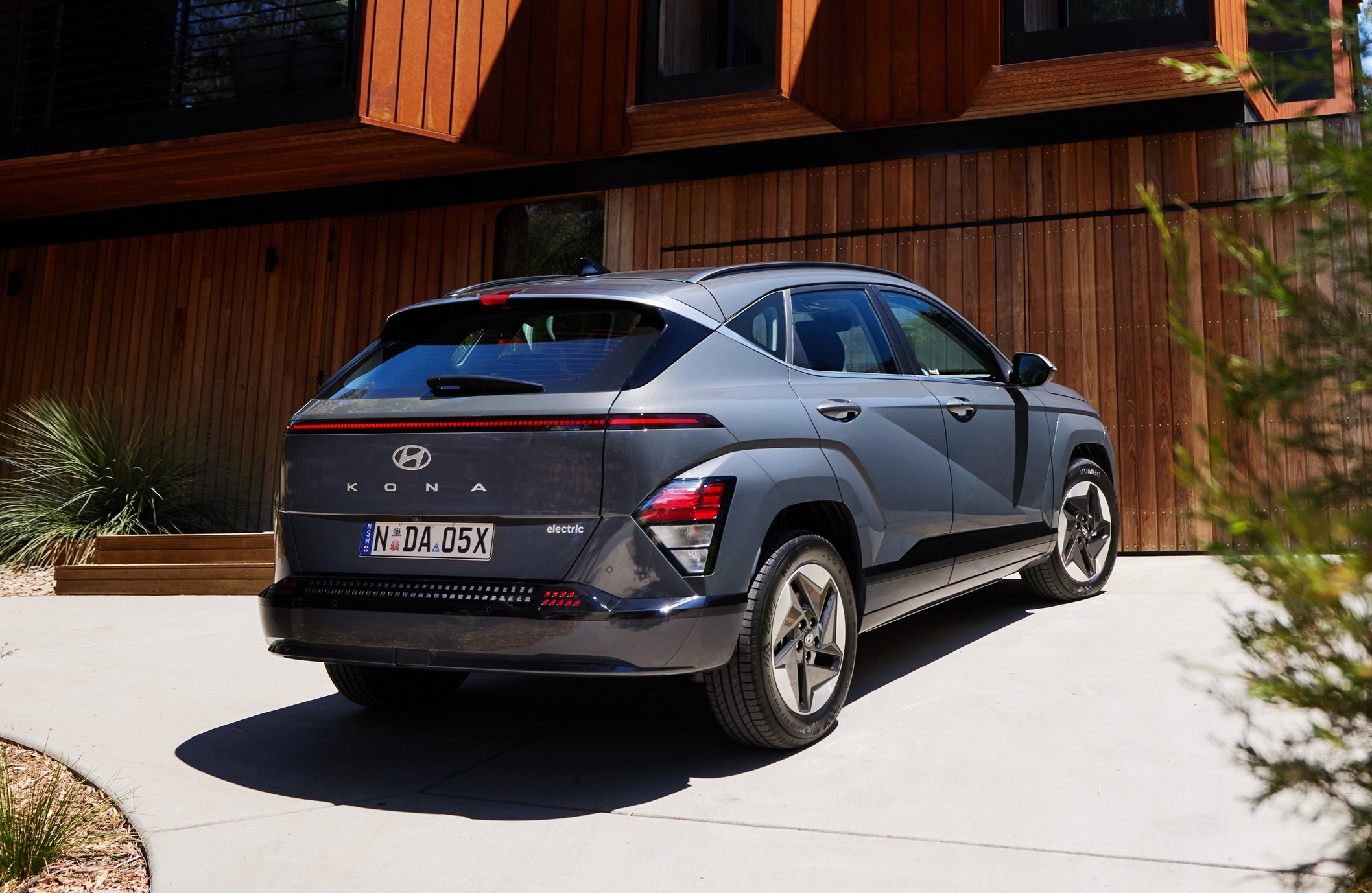
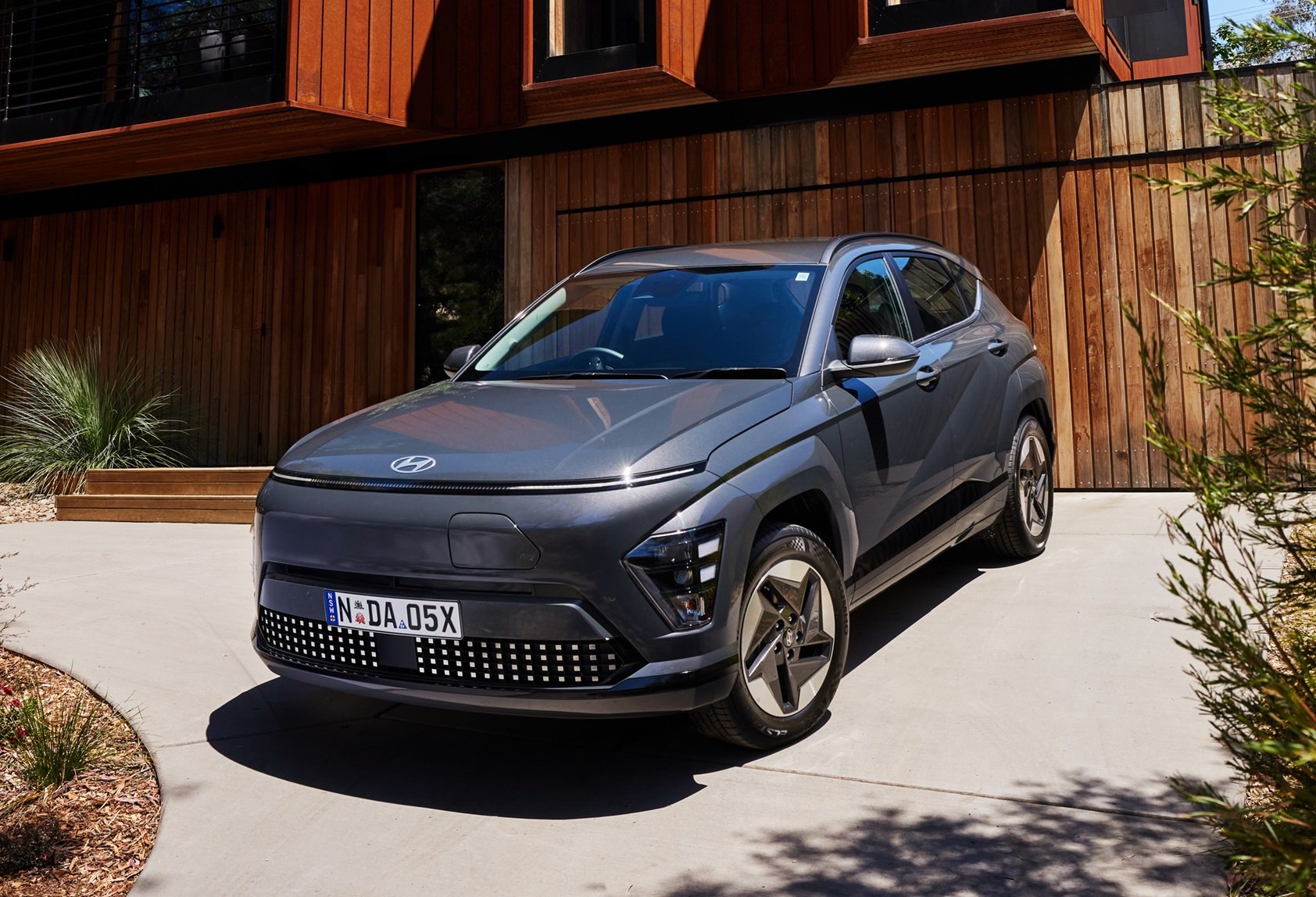


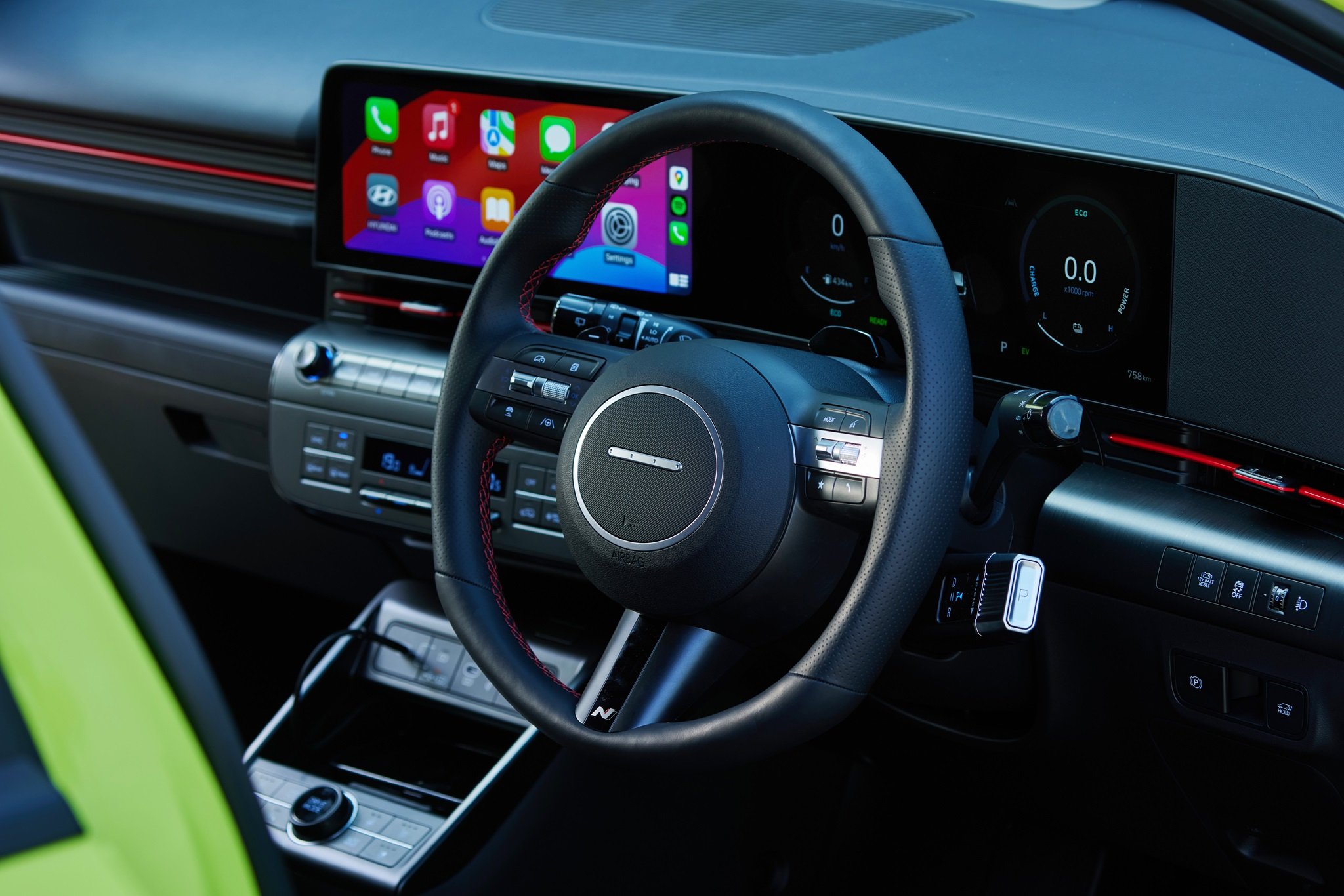

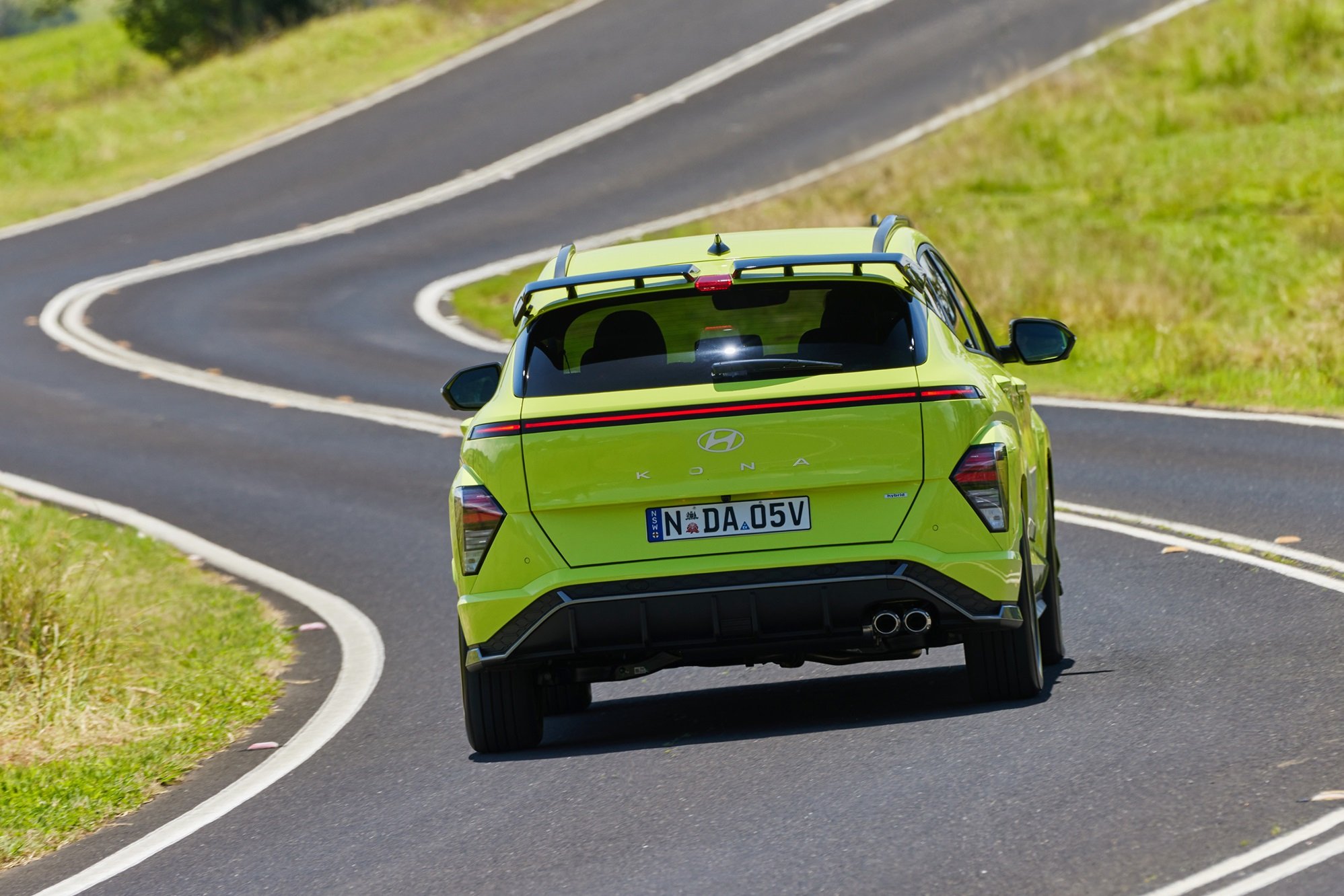
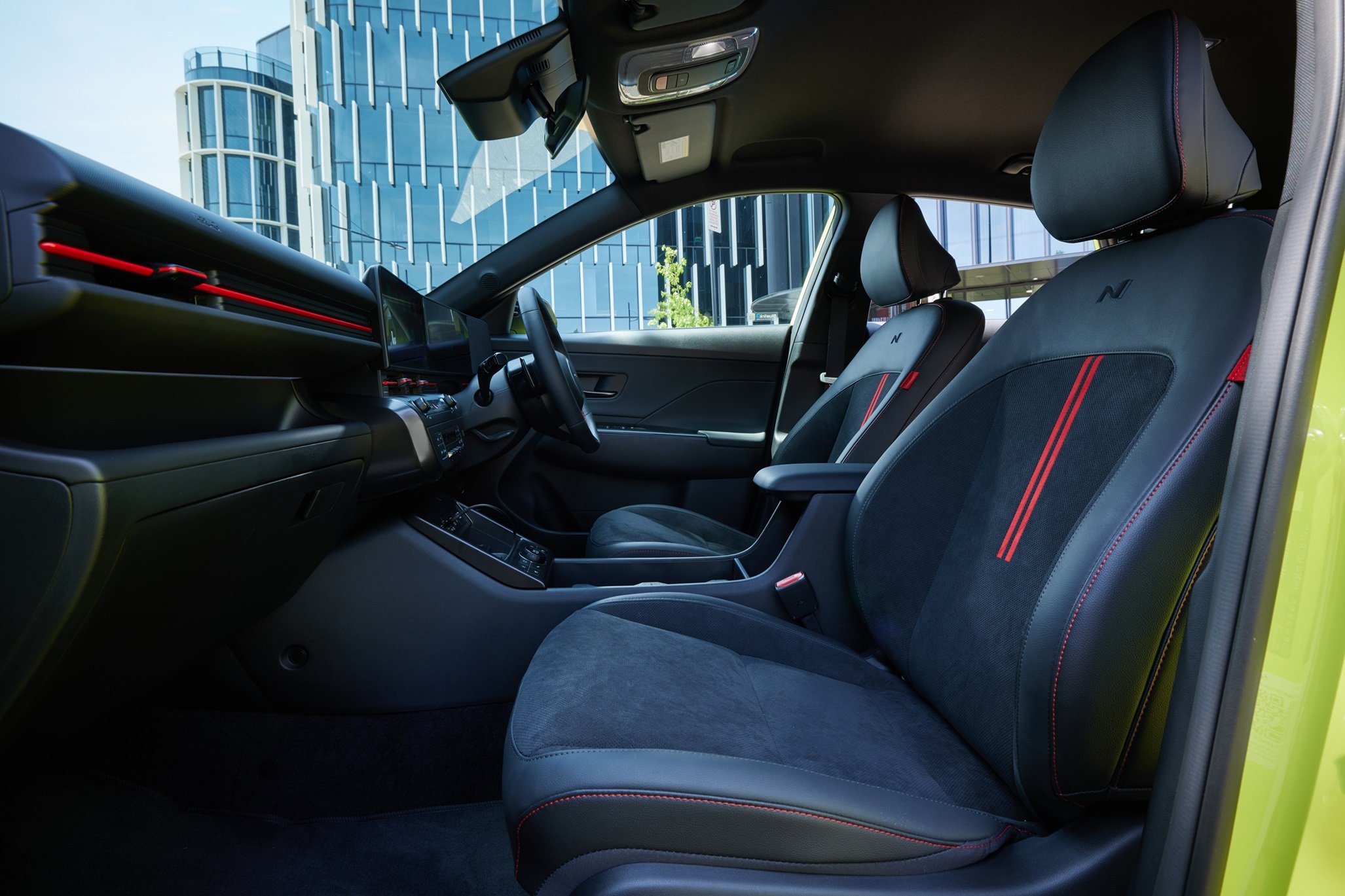












The CX-60 combines performance, batteries and SUV-luxury to beat Lexus, Mercedes and BMW while Mazda refuses to go fully electric in favour of big inline six-cylinder engines. If your family needs lots of legroom, a big boot, and grunt, the CX-60 needs to go on your shortlist.